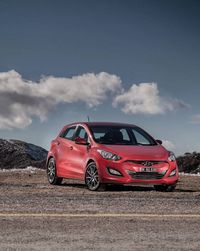Hyundai Australia launches world-first i30 SR
SYDNEY – Aug 19, 2013: Hyundai Australia has added a sporty new SR model to its hugely popular New-Generation i30 small car range. With specifications built on the i30 Elite hatch, the new SR is the first i30 in the world to be fitted with Hyundai’s 2.0 litre direct injection petrol engine.
Previewed at last year’s Sydney motor show, the i30 SR also comes with unique suspension tune, developed in Australia in close co-operation with Hyundai Motor Company in Korea. Also unique to i30 SR is a range of sports-oriented enhancements inside and out.
“The i30 SR incorporates performance and styling improvements to deliver a truly exciting driving experience,” said John Elsworth, Chief Operating Officer, Hyundai Motor Company Australia. “Like the Veloster SR Turbo, which also has a locally developed suspension tune, the i30 SR is a clear representation of Hyundai Motor Company’s willingness to embrace Australian product initiatives.”
The i30 SR’s 2.0-litre GDI naturally aspirated four-cylinder engine produces 129kW and 209Nm – a substantial 19kW and 31Nm more than the 1.8-litre multi-point injection engine that previously was the most powerful petrol engine in the i30 range.
Available with either six-speed manual or six-speed automatic transmission with sequential manual mode, the i30 SR also comes standard with 17-inch machined-face alloys wheels, sports front grille with piano-black insert, a rear diffuser, HID Xenon headlights, LED rear combination lights and unique SR badges. A panoramic glass sunroof is optional.
Inside, the i30 SR gets alloy-faced pedals, leather/leatherette upholstery, powered driver’s seat and an electrochromatic rear-view mirror. These features are in addition to the already extensive equipment levels available in the i30 Elite.
Torque-rich 2.0-litre engine
The i30 SR’s 2.0-litre GDI
engine is a member of Hyundai’s advanced Nu engine family which also
powers Hyundai’s mid-sized i40 Sedan and Tourer range. It delivers
129kW and 209Nm, (up from 110kW and 178Nm in the 1.8-litre i30), with 200Nm
or more available from 4000rpm to 5500rpm. The engine also offers
impressively linear power delivery all the way to its 6500rpm redline.
The i30 SR with six-speed manual transmission accelerates from 0-100km/h in 7.7sec and from 0-400m in 15.6sec (@146.9km/h). These times are 1.4sec and 0.7sec faster respectively than a standard 1.8-litre i30 Elite manual.
The i30 SR with six-speed automatic accelerates from 0-100km/h in 8.6sec and runs a standing 400m time of 16.1sec (@140.8km/h). This is 1.0sec and 0.6sec quicker respectively than the standard 1.8-litre i30 Elite automatic. All acceleration runs were carried out with 45 litres of fuel in the car’s 50-litre tank.
Gear ratios in the i30 SR differ from those in the 1.6-litre diesel and 1.8-litre petrol i30 range. The six-speed manual comes with a 4.333:1 final drive ratio (compared to 4.467 on 1.8 MPI) while the six-speed automatic final drive is 3.195:1 (standard: 3.796 on 1.8 MPI).
Combined fuel economy for the i30 SR manual is 7.2L/100km, while the six-speed automatic’s combined figure is 7.5L/100km.
Unique suspension tune
The i30 SR’s unique suspension
tune brings re-valved dampers and unique front springs. Developed locally
for Australian conditions, the SR’s sports suspension delivers sharp,
responsive turn-in and improved handling while retaining the i30’s
supple, rounded ride qualities even at low speeds over uneven surfaces.
Together with advanced computer suspension simulations, Hyundai Australia’s engineers worked with leading shock absorber manufacturer Sachs to develop bespoke front and rear dampers for the i30 SR. The front springs are four percent stiffer than those in the rest of the petrol i30 range.
Hyundai’s engineers tested 43 separate suspension component combinations to optimise the i30 SR’s spring rates and dampers. Again, these evaluations were carried out both in advanced computer simulations and real-world driving. Evaluation cars were tested on urban roads, dirt roads, country highways, and freeways. High-speed circuit driving tests were also undertaken to further refine the i30 SR’s suspension setup.
Suspension tuning facts:
“We aimed for a setup that was communicative, responsive and well controlled,” says Hyundai Motor Company Australia Product Planning Manager, and lead development driver, Andrew Tuitahi. “I’m confident we’ve achieved that. The i30 SR has increased dynamic ability without sacrificing everyday usability. Most importantly, it’s also great fun to drive.”



